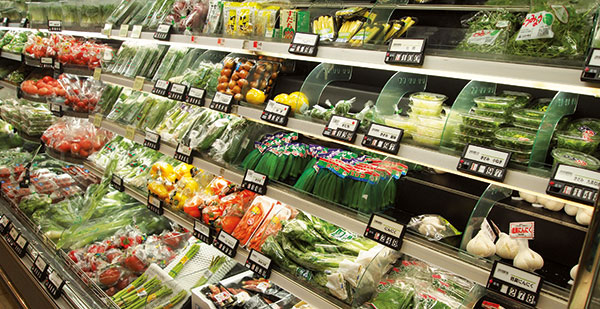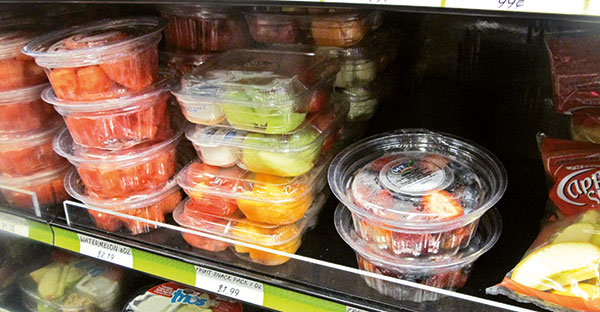Convenience produce
Market and packaging

Convenience produce (referred to in Italy as “4th and 5th range produce”) refers to fresh fruit and vegetables which, after being harvested, undergo minimal industrial processes aimed at guaranteeing their safety, hygiene and best value following good manufacturing practices.
The “fresh fruit and vegetables” industry begins with harvesting from the field, proceeds with preparation by processing machinery (cleaning, cutting etc.), then on to the packaging lines, consisting in protective atmosphere treatment and specific packaging using ad hoc materials and designs.
From the moment of issue from the processing facility until display on shelves, the produce must be kept at temperatures not exceeding 8°C: the cold chain must be respected even during transport.
Convenience produce, typical to fresh fruit and vegetables, quickly established themselves on the market, meeting the approval of consumers.
The hectic rhythms and lifestyles of modern life have doubtless fostered this growth process: nuclear families with two working parents, the rise of singles, the well-established practice of snacking out of the house… all are factors tending to diminish the time dedicated to preparing meals, with a consequent search for foods with a high service content.
The convenience fruit and vegetable products fully satisfies these new needs.

The market
According to current estimates, the convenience range market is made up of about 75% prepared vegetables, while the remaining 25% is accounted for by prepared fruit.
The offer of ready to use vegetables presents an array of about 45 items on offer, subdivided by use functions, such as vegetables for minestrones, finger foods, salads, vegetables for cooking etc., in addition to various types of cleaned and selected vegetables.
The offer of ready to eat fruit - washed, cored, diced/sliced or offered as fruit salads – is undergoing progressive growth.
According to the estimates of Cesena Fiera’s monitoring center, Italy stands as the third largest European market, after Great Britain and Germany in terms of consumption of fresh convenience fruit and vegetables. In any case, all European markets show promising potential growth rates.
According to a report by Istituto Italiano Imballaggio, overall consumption in Italy of these packaging types (vegetables plus fruits) from 2005 to 2012 showed a significant average annual growth rate of 5.8%. However, it felt the repercussions of the global crisis during the two year period of 2013-2014, with slight decline.
As for distributional channels, largescale retail remains the undisputed leader with an 80% share, followed by vending (15%), basically in schools and offices. A more recent development is the distribution of fresh convenience produce in traditional farmer’s markets (5%).
About 75% of production of this type of fruit and vegetables is managed by specialized concerns (often the farms themselves that raise the crops, which outfit themselves with ad hoc lines), while 25% is produced by a few chain retailers.

Packaging
The packaging of these products is about 80% PP two way bags and PET or PS tubs; the remaining 20% or so is typically a bag or tub made from converted flexible polylaminate, in which case the shelf life is a few days on a refrigerated shelf.
Retail sales have performed very well, to the point that fresh convenience fruit and vegetable products have reached a share of 12-15%.
Recently, producers have begun offering this type to restaurants and catering, offering larger packaging units, i.e. reclosable plastic containers with a capacity of 2 to 5 kg.
The supply of fresh convenience range fruit and vegetables in Italy is led by the Bonduelle group, both nationally and in Europe, followed by a hundred or so other producers, many of them local operations.
Definitions of the different product categories
1st range - Fresh fruit and vegetables freshly harvested, to be cleaned, cut and prepared.
2nd range - Preserved or semi-preserved fruit and vegetables
3rd range - Frozen fruit and vegetables
4th range - Prepared fresh fruit and vegetables, ready to eat, packaged, with a shelf life of one week after packaging.
5th range - Cooked and packaged fruit and vegetables, usually vacuum-packed, with a shelf life of up to 15 days.
Plinio Iascone
Istituto Italiano Imballaggio

















